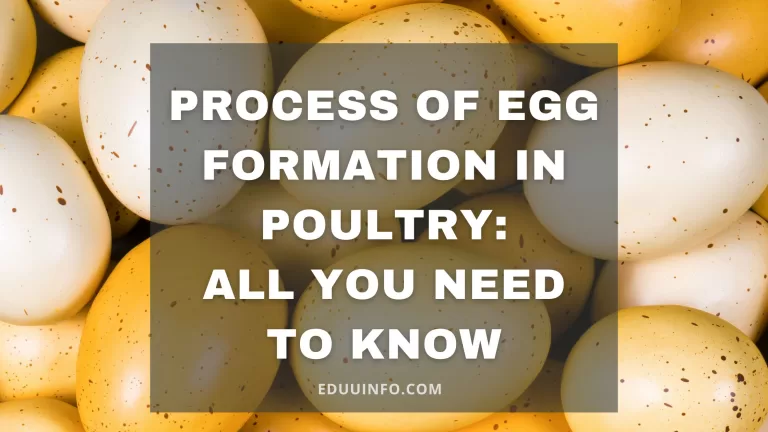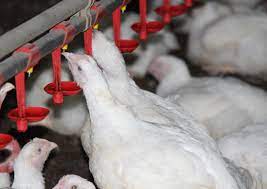How to Start Plantain Farming in Nigeria 2024: Expert Guide
If you are thinking of owing a successful plantain farm, here is an expert guide for you on how to start Plantain farming in Nigeria.
Plantain is one of the most popular and nutritious fruits in Nigeria.
It is consumed in various forms, such as fried, roasted, boiled, or processed into chips, flour, or amala.
Plantain farming is also a lucrative and sustainable business that can provide a steady income for farmers and entrepreneurs. In this blog post, you will learn How profitable is plantain farming in Nigeria, How much it cost to start plantain farming in Nigeria
As well as How to start plantain farming in Nigeria
Let’s get started.
Read Irish Potato Farming in Nigeria
How Profitable is Plantain Farming in Nigeria?

Plantain farming is very profitable in Nigeria for several reasons.
1. Plantain has a high demand in the local and international markets.
According to the Food and Agriculture Organization, Nigeria is the largest producer of plantain in Africa, with an annual production of over 4 million metric tons.
Plantain is also exported to other African countries, Europe, and America, where it is used for various culinary and industrial purposes.
2. Plantain farming is a low-risk and low-maintenance business.
Plantain is a perennial crop that can produce fruits for up to 10 years or more. Plantain is also resistant to drought and pests, and can grow in various soil types and climatic conditions.
It does not require much input, such as fertilizers, pesticides, or irrigation, as long as the soil is rich in organic matter and well-drained.
3. Plantain farming is a profitable business because of its high yield and low cost of production.
It can yield up to 40 tons per hectare per year, depending on the variety, spacing, and management practices.
Also, Plantain farming has a low cost of production, as the major expenses are land preparation, planting materials, weeding, and harvesting.
Plantain farming can generate a net profit of over N1 million per hectare per year, depending on the market price and the scale of operation.
How Much Does it Cost to Start Plantain Farming in Nigeria?
The cost of starting plantain farming in Nigeria depends on several factors, such as the size of the farm, the location, the variety
As well as the quality of the planting materials, and the level of mechanization.
However, a rough estimate of the cost of starting plantain farming in Nigeria is as follows:
1. Land:
The cost of land varies from state to state, and from rural to urban areas.
However, a good farmland for plantain farming should be located in the rainforest or mangrove swamp zones of Nigeria, where there is adequate rainfall and humidity.
The price of land for plantain farming can cost between N100,000 to N500,000, depending on the location and the availability of land.
2. Planting materials:
The planting materials for plantain farming are the suckers, which are the shoots that grow from the base of the mother plant.
The suckers should be healthy, disease-free, and of a high-yielding variety.
The most common varieties of plantain in Nigeria are the French horn, the false horn, and the giant plantain.
However, The cost of suckers varies from N50 to N200 per sucker, depending on the variety and the quality.
A hectare of land for plantain farming can accommodate between 1,500 to 2,000 suckers, depending on the spacing and the arrangement.
Therefore, the cost of suckers for a hectare of land can range from N75,000 to N400,000.
3. Land preparation:
The land preparation for plantain farming involves clearing, ploughing, harrowing, and making ridges or beds.
Land preparation can be done manually or mechanically, depending on the availability of labor and equipment.
The cost of land preparation for a hectare of land can range from N50,000 to N200,000, depending on the level of mechanization and the terrain of the land.
4. Weeding:
The weeding for plantain farming involves removing the unwanted plants that compete with the plantain for nutrients, water, and sunlight.
This can be done manually or mechanically, depending on the availability of labor and equipment.
Also, it should be done at least three times in a year, or as often as necessary.
The cost of weeding for a hectare of land can range from N30,000 to N120,000, depending on the frequency and the method of weeding.
5. Harvesting:
The harvesting for plantain farming involves cutting the mature bunches of plantain from the plants.
This can be done manually or mechanically, depending on the availability of labor and equipment.
It should be done when the plantain is ripe, or slightly unripe, depending on the market preference.
However, the cost of harvesting for a hectare of land can range from N20,000 to N80,000, depending on the quantity and the method of harvesting.
Therefore, the total cost of starting plantain farming in Nigeria for a hectare of land can range from N300,000 to N1,300,000, depending on the factors mentioned above.
You may also like Tomato Farming in Nigeria
How to Start Plantain Farming in Nigeria
Having discussed the cost of starting a Plantain farming, here are steps in how to start plantain farming in Nigeria:
1. Carry out a feasibility study:
Before starting plantain farming in Nigeria, you should conduct a feasibility study to assess the viability and profitability of the business.
You should research the market demand, the supply chain, the competitors, the potential customers, the pricing, the risks, and the opportunities.
You should also write a business plan that outlines your goals, strategies, budget, and projections.
2. Get land:
The next step in how to start plantain farming in Nigeria is to get land for plantain farming.
You should look for suitable farmland that is located in the rainforest or mangrove swamp zones of Nigeria, where there is adequate rainfall and humidity.
Also look for farmland that is rich in organic matter and well-drained.
However, avoid renting or leasing farmland for plantain farming, as it is better to own your land.
You should also secure the necessary documents and permits for the land.
3. Prepare the land:
The next step is to prepare the land for plantain farming.
Clear the land of trees, stumps, and weeds and also plough and harrow the land to loosen the soil and improve the aeration.
You should also make ridges or beds to facilitate drainage and prevent waterlogging. Don’t forget to apply organic manure, such as compost, poultry droppings, or cow dung, to enrich the soil and improve fertility.
4. Plant the suckers:
The next step in how to start Plantain farming in Nigeria is to plant the suckers for plantain farming.
Select healthy, disease-free, and high-yielding suckers from reputable nurseries or farmers. You should also choose the variety that suits your market and climatic conditions.
Plant the suckers at a spacing of 3m by 3m, or 2.5m by 2.5m, depending on the variety and the arrangement.
Also plant the suckers at a depth of 10cm to 15cm, and cover them with soil. You should also water the suckers after planting to enhance root development and establishment.
5. Maintain the farm:
The next step in how to start Plantain farming in Nigeria is to maintain the farm for plantain farming.
Weed the farm regularly to remove the unwanted plants that compete with the plantain for nutrients, water, and sunlight.
You should also mulch the farm with dry leaves, grasses, or straw, to conserve moisture, prevent erosion, and suppress weeds.
You should also prune the plantain plants to remove the dead, diseased, or damaged leaves and suckers.
Also protect the farm from pests, such as rodents, birds, insects, and monkeys, by using traps, nets, fences, or repellents.
You should also fertilize the farm with organic or inorganic fertilizers, such as NPK, urea, or potassium sulfate, to boost the growth and yield of the plantain.
In addition, irrigate the farm during the dry season, or in areas with low rainfall, to ensure adequate water supply for the plantain.
6. Harvest the plantain:
The final step is to harvest the plantain for plantain farming.
Harvest the plantain when the fruits are ripe, or slightly unripe, depending on the market preference.
Cut the bunches of plantain from the plants with a sharp knife or a machete.
You should also cut the plants at the base, leaving about 30cm of the stem, to allow the suckers to grow and produce new plants.
However, handle the plantain carefully to avoid bruising or damaging the fruits.
Then sort, grade, and package the plantain according to the size, quality, and market standards.
See Cassava Farming and Processing in Nigeria
Conclusion on How to Start Plantain Farming in Nigeria
Plantain farming in Nigeria is a lucrative and sustainable business that can provide a steady income for farmers and entrepreneurs because of high demand, the low risk, the low maintenance, the high yield, and the low cost of production.
Plantain farming is also easy to start and manage, as long as you follow the steps outlined in this blog post on how to start plantain farming in Nigeria.
Plantain farming can also create employment opportunities, reduce food insecurity, and contribute to the economic development of Nigeria.
We hope this blog post has been helpful.
Don’t forget to share.
FAQs
How long does it take for plantain to mature and produce fruits?
It takes about 9 to 12 months for plantain to mature and produce fruits, depending on the variety, the climate, and the management practices.
How many times can plantain produce fruits in a year?
Plantain can produce fruits once or twice in a year, depending on the variety, the climate, and the management practices.
Some varieties of plantain can produce two bunches of fruits in a year, while others can produce only one.
What are the challenges of plantain farming in Nigeria?
Some of the challenges of plantain farming in Nigeria are:
- Lack of access to quality planting materials
- Lack of access to adequate land and water resources
- Lack of access to credit and finance
- Lack of access to modern technology and equipment
- Lack of access to extension services and training
- Lack of access to storage and processing facilities
- Lack of access to reliable and profitable markets
- High cost of transportation and logistics
- High incidence of theft and vandalism
- Unfavorable government policies and regulations








